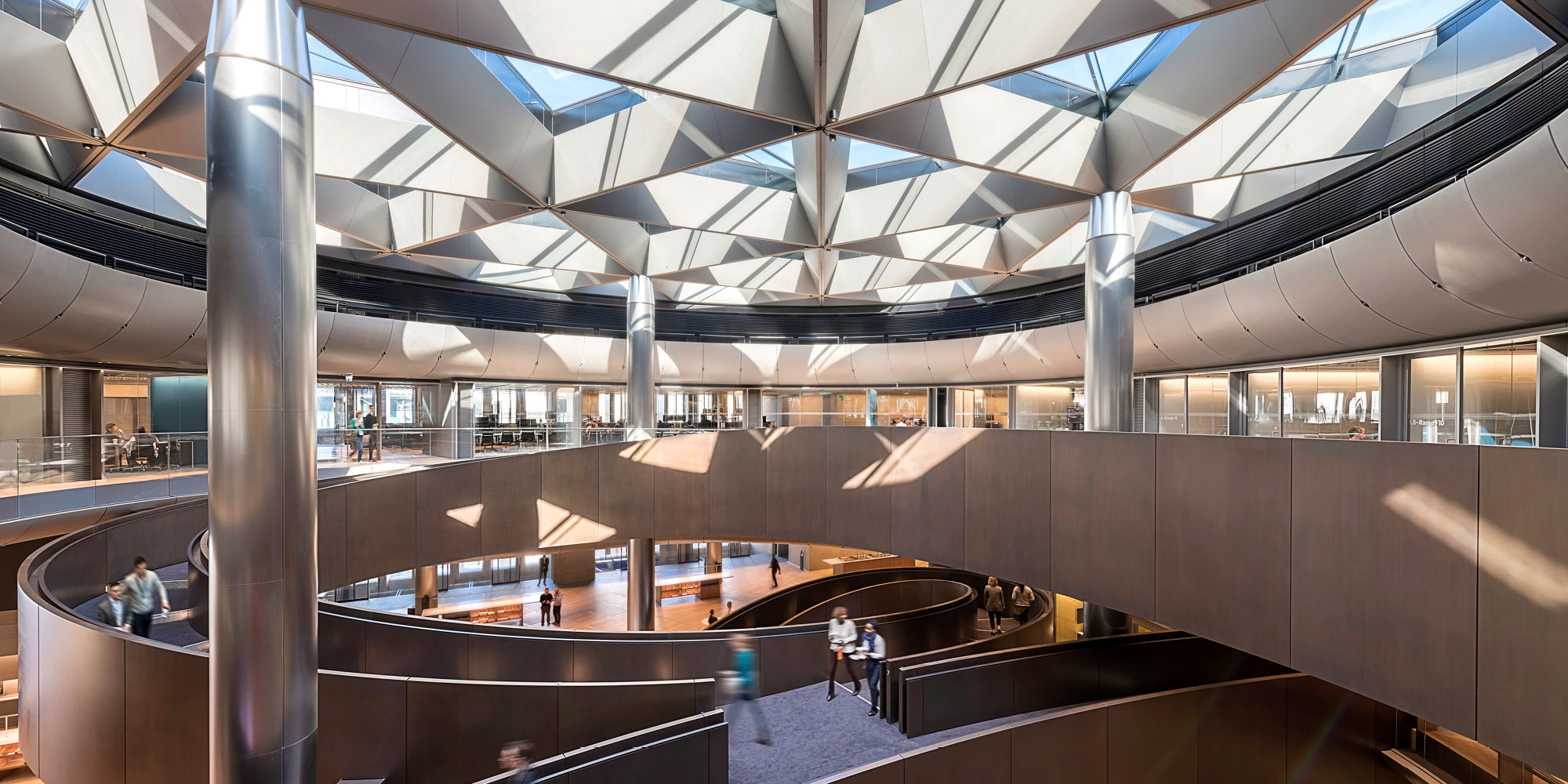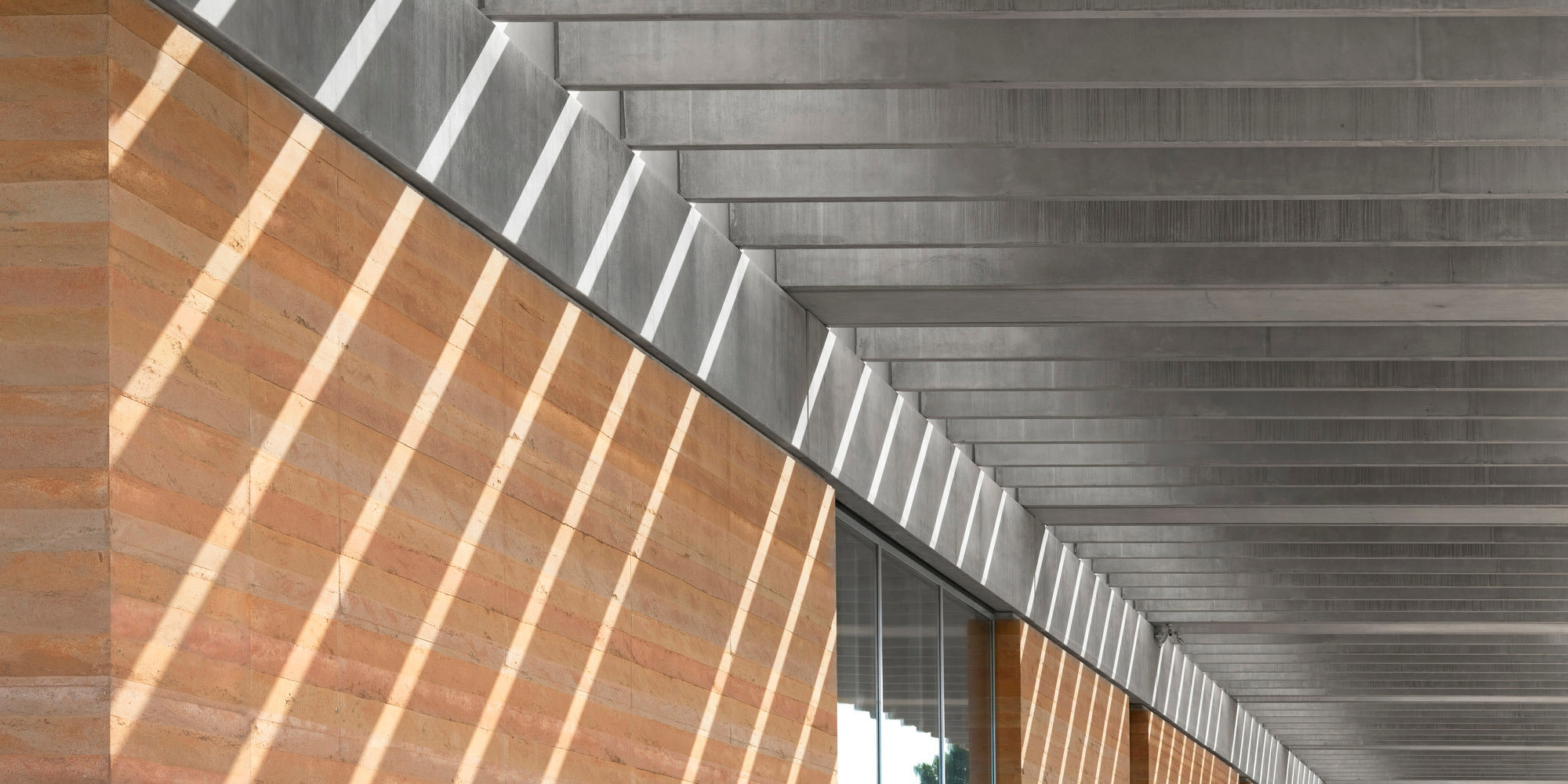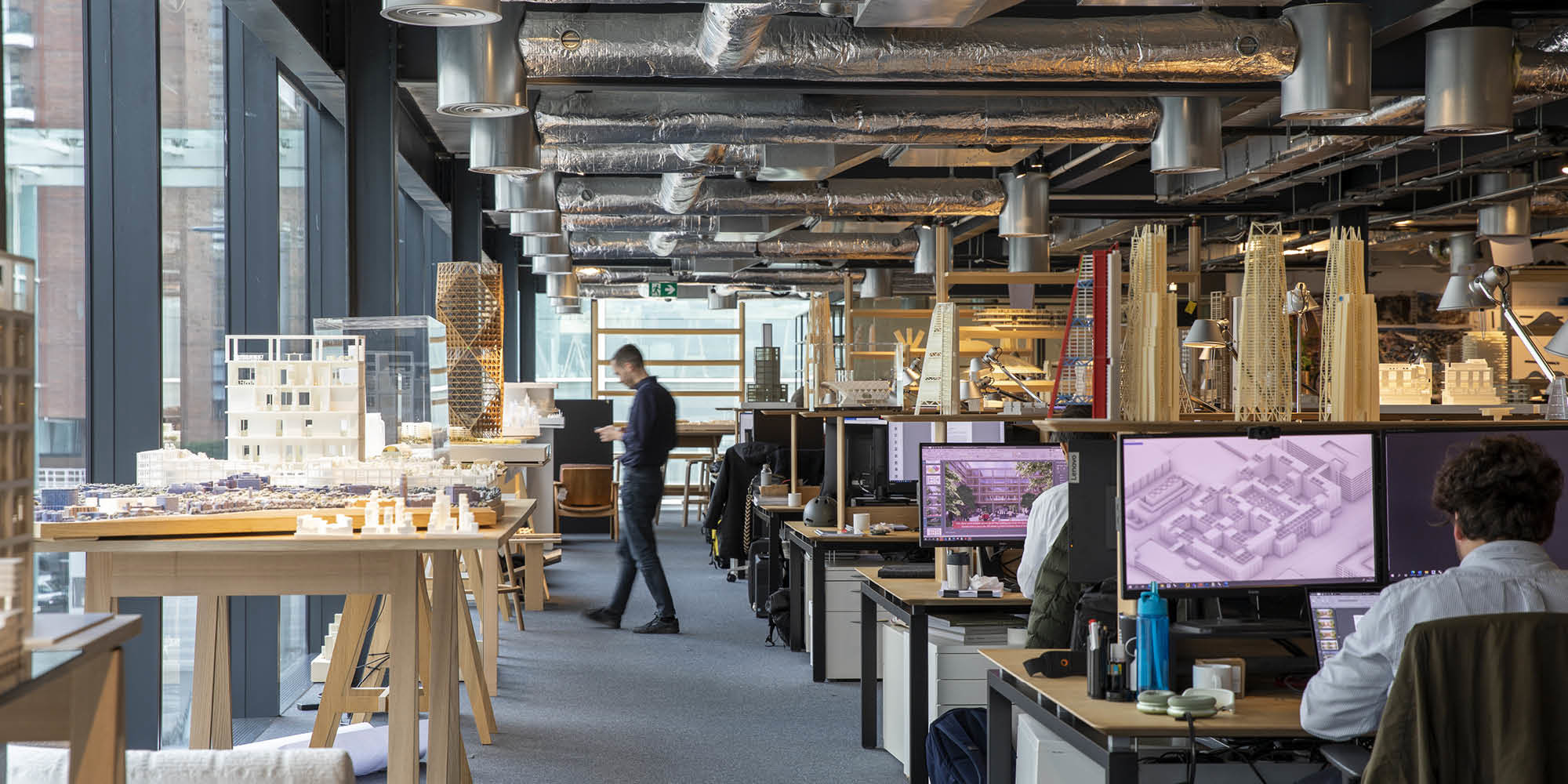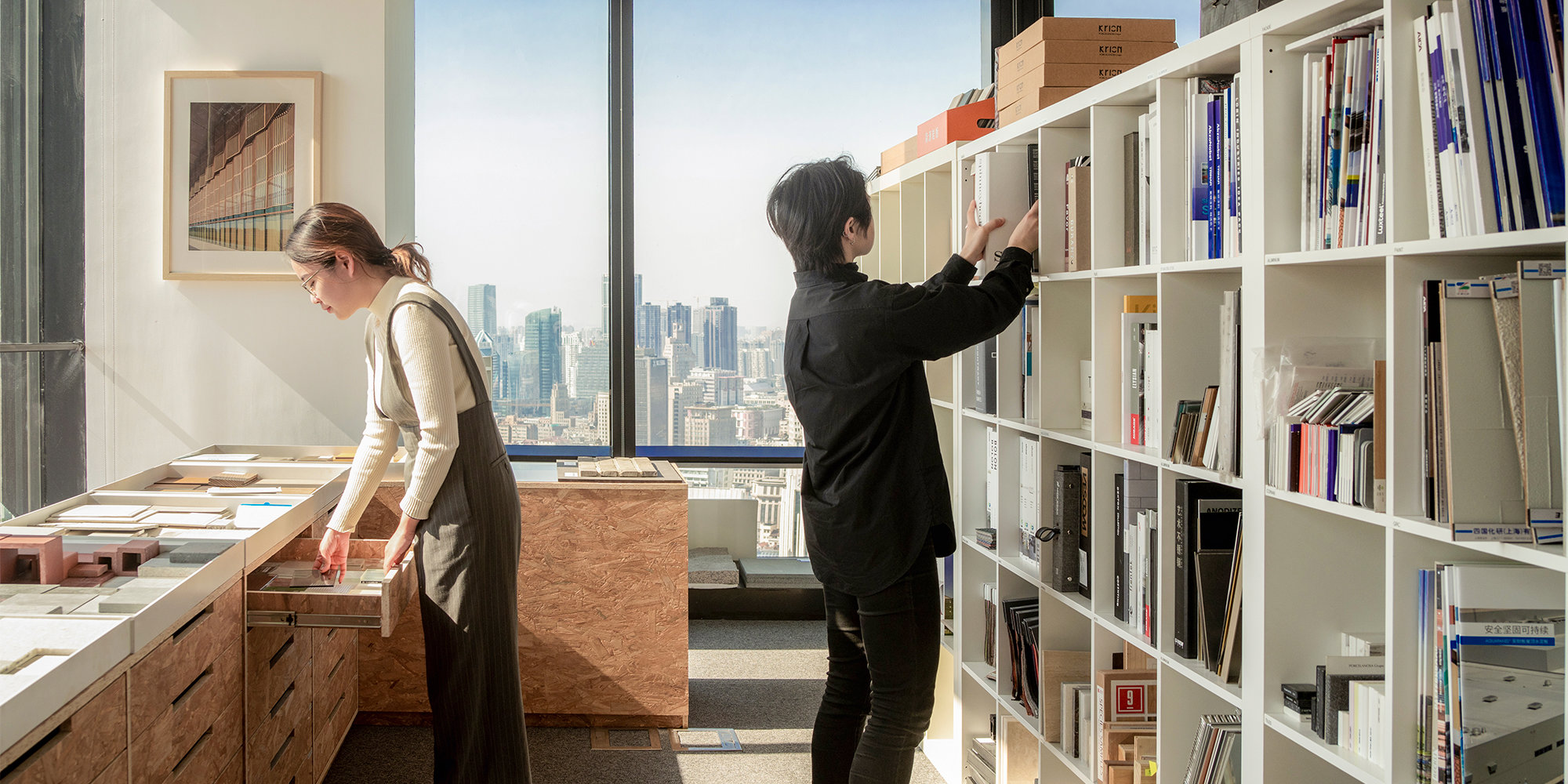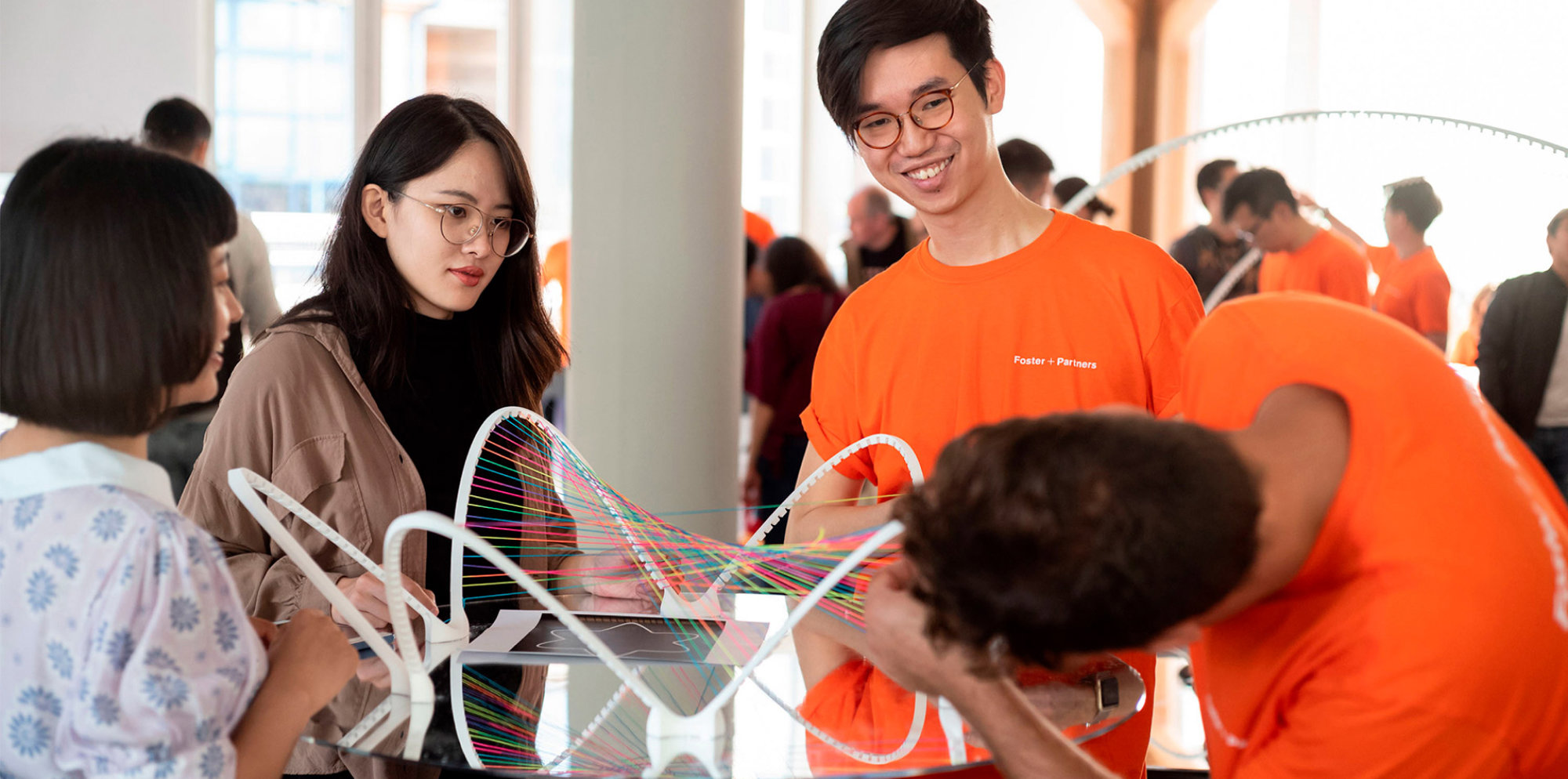Yesterday Norman Foster opened a special exhibition to mark the 25th anniversary of the opening of the Sainsbury Centre for Visual Arts (1974-78).
When Sir Robert and Lady Sainsbury donated their art collection to the University of East Anglia, together with an endowment for a new building, the Sainsbury Centre for Visual Arts was established as an academic and social focus within the campus.
The Sainsburys shared a belief that the study of art should be a pleasurable experience. Rather than a traditional institution, with its emphasis on art in isolation, all activities were grouped within a single, clear-span structure, glazed at both ends, and lit from above by a mixture of natural and artificial light. Arrival is into a conservatory, which combines the functions of reception, security, coffee bar and meeting place. To one side is a temporary exhibitions space; to the other a living area with easy seating, low tables and art books for relaxed contemplation.
A major expansion of the Centre's facilities - the Crescent Wing - was commissioned by Sir Robert and Lady Sainsbury in 1988 and completed in 1991.
Now, 25 years on, the Robert and Lisa Sainsbury Collection has more than doubled in size, and two and a half million visitors have passed through the door.
Lord Foster said,
I have been quoted as saying that Sir Robert and Lady Sainsbury were the most demanding clients I have worked with - and I hasten to add that as an architect that was the highest compliment I could pay. From the beginning they really helped us to focus our thinking; and from the day the building was completed, until Sir Roberts death, they both continued to be actively involved in the Centre, how it worked, and how it might be expanded and developed in the future. Lady Sainsbury continues to play a vital role in this regard.
We selected a location which at that time was almost in the wilderness of the campus away from the other arts and next to science to encourage cross-fertilisation. And as a building it put all the varied functions and user groups galleries and teaching spaces, students, academics and the public together in a single space, under a single roof. It was a gallery without walls in the conventional sense.
Lady Sainsbury said,
Flexibility and growth were always central to the Sainsbury Centre project, yet throughout the last 25 years one thing has remained constant. At the heart of it all is the importance of the objects and our desire to share our enjoyment of them.
25 years: The Sainsbury Centre for Visual Arts Exhibition
Sainsbury Centre for Visual Arts, University of East Anglia, Norwich
Open 13 May 31 August 2003
A special commemorative exhibition which reveals the remarkable works from the Sainsbury Collection that are little known or seldom seen, highlights important recent acquisitions, and explores the Sainsburys support for living artists.
